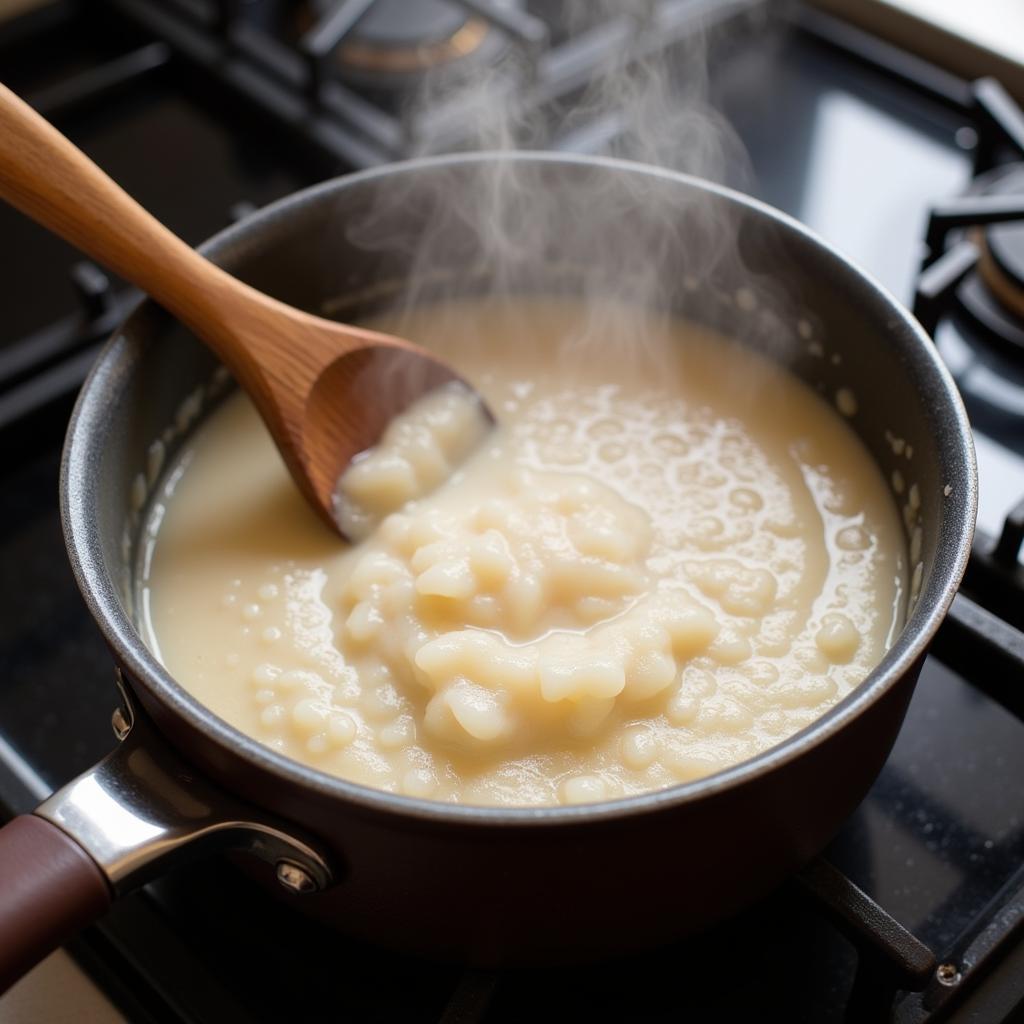The Ultimate Guide to Making Authentic African American Grits
Grits, a creamy and comforting porridge made from ground corn, holds a special place in African American cuisine. This staple dish, with roots tracing back to indigenous American traditions, has been passed down through generations, evolving into a beloved comfort food with endless variations. This guide delves into the history and cultural significance of African American grits, explores different cooking methods and regional variations, and provides a foolproof recipe to master this Southern classic.
A Journey Through Time: Tracing the Origins of Grits
While grits are now deeply ingrained in African American culinary heritage, their journey began long before the transatlantic slave trade. Indigenous peoples in the Americas, particularly the Muskogean tribes, cultivated and consumed corn as a dietary staple for centuries. They developed techniques for grinding dried corn kernels into a coarse meal, which was then cooked with water or broth to create a porridge-like dish – the precursor to modern-day grits.
During the transatlantic slave trade, enslaved Africans were introduced to grits, which quickly became a vital source of sustenance on plantations. Limited access to resources and ingredients led to the ingenious adaptation of grits into a versatile dish, incorporating whatever ingredients were available, like vegetables, meats, and seasonings. This adaptability and resilience helped solidify grits’ place in African American culinary traditions.
 Variety of Grits Dishes
Variety of Grits Dishes
Beyond Basic: Exploring Regional Variations
As grits traveled across the American South, they absorbed the unique culinary influences of different regions, giving rise to a diverse array of preparations and flavor profiles.
- Coastal Carolina: Known for their creamy, cheesy grits, often served with fresh seafood like shrimp, crab, or fish.
- Lowcountry: Influenced by West African flavors, Lowcountry grits feature ingredients like tomatoes, onions, garlic, and smoked meats, creating a rich and savory profile.
- Deep South: Characterized by simple preparations, often cooked with water, butter, and salt, allowing the natural corn flavor to shine through. They are often served as a side dish with breakfast, lunch, or dinner.
Mastering the Art of Cooking Grits: Tips and Techniques
Cooking grits might seem straightforward, but achieving the perfect creamy texture requires a bit of finesse. Here are some essential tips for grits that are smooth, not grainy:
- Choosing the Right Grits: Opt for stone-ground grits for a coarser texture and more intense corn flavor, or quick-cooking grits for a smoother, faster option.
- The Importance of Liquid Ratio: The key to creamy grits lies in the liquid ratio. A general rule of thumb is 4 cups of liquid (water, broth, or a combination) for every 1 cup of grits.
- Low and Slow Cooking: Patience is key! Cook grits over low heat, stirring frequently to prevent sticking and ensure even cooking. This allows the grits to absorb the liquid gradually, resulting in a creamy texture.
- Seasoning for Success: While salt and pepper are classic additions, don’t be afraid to experiment with other seasonings like garlic powder, onion powder, or even a pinch of cayenne pepper for a touch of heat.
 Cooking Grits on Stovetop
Cooking Grits on Stovetop
A Taste of Tradition: Authentic African American Grits Recipe
This recipe provides a delicious starting point for your grits journey, capturing the essence of this Southern staple.
Ingredients:
- 4 cups water
- 1 cup stone-ground grits
- 1 teaspoon salt
- 4 tablespoons butter
- 1/2 cup shredded cheddar cheese (optional)
Instructions:
- In a large saucepan, bring water and salt to a boil over high heat.
- Gradually whisk in the grits, stirring constantly to prevent lumps.
- Reduce heat to low, cover, and simmer for 20-25 minutes, stirring occasionally, until the grits are tender and have absorbed most of the liquid.
- Remove from heat and stir in the butter until melted.
- Stir in the cheese, if desired, until melted and creamy.
- Serve immediately as a side dish or as a base for your favorite toppings.
Frequently Asked Questions about Grits
Q: Can I use milk instead of water for cooking grits?
A: Absolutely! Using milk instead of water adds a richer flavor and creamier texture to your grits. You can also use a combination of milk and water for a balance of flavor and consistency.
Q: How do I prevent lumps in my grits?
A: The key is to whisk the grits gradually into the boiling liquid while stirring constantly. This ensures that the grits are evenly distributed and prevents them from clumping together.
Q: Can I make grits ahead of time?
A: Yes, you can make grits ahead of time and reheat them when ready to serve. Store cooked grits in an airtight container in the refrigerator for up to 3 days. To reheat, add a splash of milk or water and warm over low heat, stirring frequently.
Exploring More African American Culinary Delights
- Learn about the versatility of african cornmeal and its various uses in African cuisine.
- Discover a world of flavor with our collection of african american appetizers perfect for any occasion.
This guide provides a glimpse into the rich history and culinary significance of African American grits. From their humble beginnings to their evolution into a beloved comfort food, grits represent the resilience and creativity of African American culinary traditions. So, embrace the warmth of Southern hospitality and treat your taste buds to a bowl of creamy, flavorful grits – a true testament to the power of simple ingredients transformed into a culinary masterpiece.
Need help with African recipes? Contact us at +255768904061, kaka.mag@gmail.com or visit us in Mbarali DC Mawindi, Kangaga, Tanzania. Our customer care team is available 24/7.


